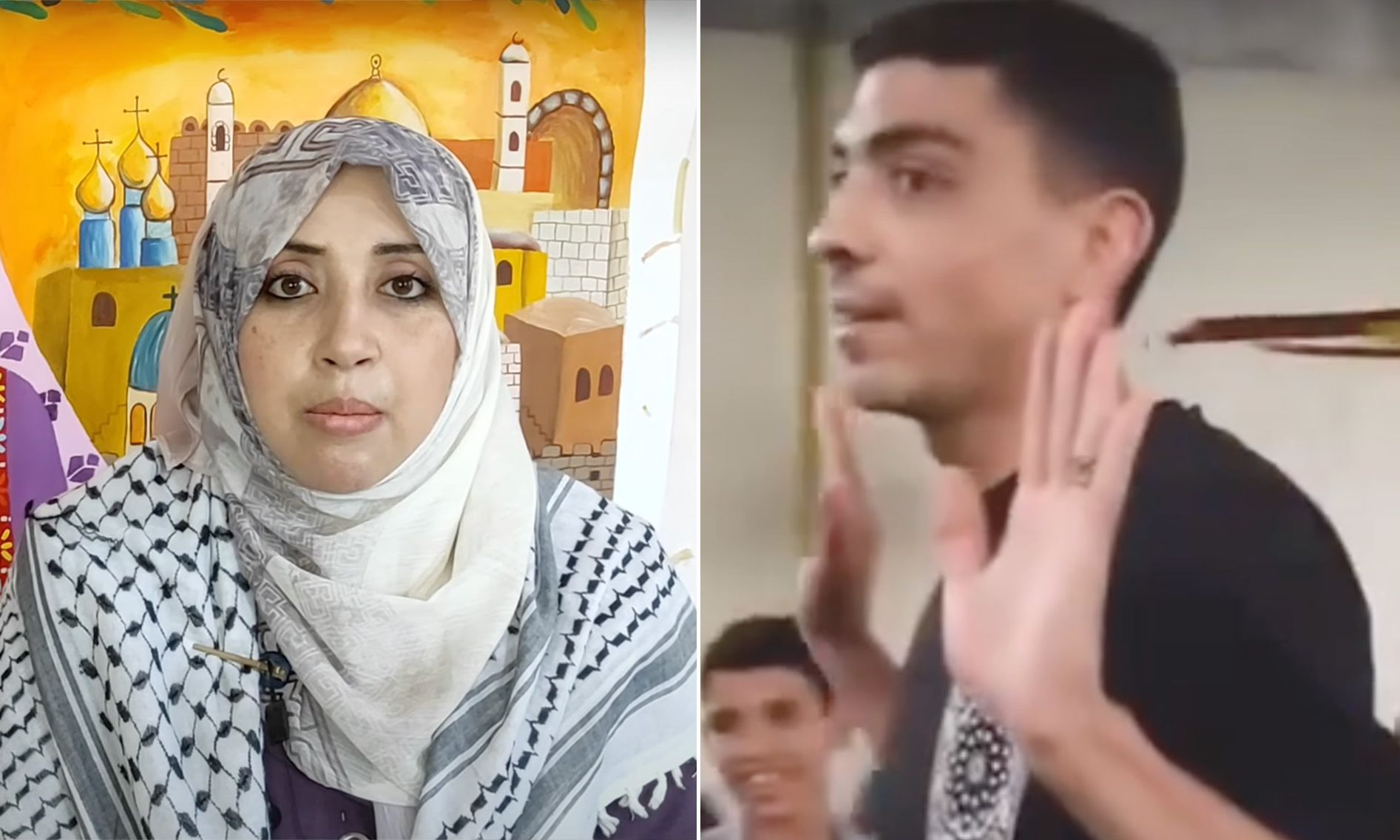The artists Heba Zagout (left) and Muhammed Sami Qariqa (right) both died in Israeli airstrikes in Gaza this month Heba Zagout: screenshot via YouTube; Muhammed Sami Qariqa: screenshot via Facebook
At least two artists are among the more than 3,700 people who have been killed, according to the Ministry of Health in Gaza, since the start of Israel’s retaliatory strikes following the 7 October terrorist attack by Hamas, in which around 1,400 people were killed. (Around 200 hostages taken by Hamas in that attack are still being held in Gaza.)
Two weeks before she was killed by an Israeli airstrike in Gaza on 13 October, the Palestinian artist Heba Zagout posted a YouTube video about her work. In the video, the 39-year-old mother of two, whose work is steeped in Palestinian culture and folklore, said: “I consider art a message that I deliver to the outside world through my expression of the Palestinian cause and Palestinian identity.”
She also noted that in her art, “I try to express the negative feelings, emotions and tensions that occur in Gaza.” And yet her brightly coloured depictions of Palestinian landscapes and iconic architecture in Gaza and Jerusalem, often featuring female figures clothed in traditional thobes—or embroidered dresses—are also full of hope. Her depictions of Gazan villages and the Al-Aqsa mosque in Jerusalem earned her a wide following on social media, where Palestinians’ art transcends the mobility restrictions imposed on them by Israel.
“Her work was popular in both the West Bank and Gaza,” says Mitri Raheb, the Bethlehem-based Palestinian Lutheran priest who founded the Dar Kalima Art Centre in Gaza, where Zagout was a frequent visitor at openings and participated in competitions. The art school began as a satellite programme to Dar al Kalima College, an institution Raheb founded in Bethlehem in 1995 in an Ottoman-era building that was restored and converted from a former church crypt.
In an interview with The Art Newspaper in 2021, Raheb said that beyond helping expose young Gazan artists to the outside world and assisting them in earning their livelihoods by selling their work abroad, the college’s goal is to provide a venue for “art as therapy and as a way to express a dynamic Gazan identity that transcends politics. Making art is a way for Gazans to represent their own reality and tell their own stories.”
One of the centre’s volunteers who taught art to children, muralist Muhammed Sami Qariqa, was killed earlier this week when a missile hit the Al-Ahli Baptist Hospital in Gaza City, killing hundreds of Palestinians sheltering there. “He was trying to calm the children,” says Raheb, “by singing them songs and doing drawings.” (The cause of the explosion at Al-Ahli Baptist Hospital that left hundreds dead is under dispute, with US and Israeli officials attributing it to a Hamas-affiliated terrorist group, while Palestinian authorities maintain it was an Israeli airstrike.)
Zagout, whose death was first reported by Hyperallergic, worked as a public school teacher and was previously employed by the United Nations Relief and Works Agency for Palestine Refugees. She studied fine art at Gaza’s Al-Aqsa University and was trained in graphic design.
Her sister, Maysaa Ghazi, posted the YouTube video on Facebook on 15 October, writing: “My sister, the martyr, the artist Heba Zagout, this video was filmed days before her martyrdom. She wished that an exhibition would be held for her, but God chose what was best for her.”
In a moment of such violence, trauma and tension, Raheb says, art is all the more important because it “humanises a people who are often reduced to stereotypes—and is a powerful instrument for healing.”

